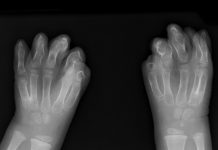Shin splints are the most common running related injuries, which you can experience while you run behind a soccer ball or jog around your neighborhood park.
These shin splints can also take place during your training for marathon.
Shin splints are most common among runners and athletes, but the risk of developing the shin splints is very less in your regular walks or morning jog and also during your aerobics.
This term shin splint usually refers to pain along your shinbone, large bone which is present in front of your lower leg.
You can experience this pain due to an overload or over use of shinbone and the tissue which connects the bone and the associated muscles of your leg. Most of the cases of shin splints can be easily treated with certain simple self care tips like rest, with ice and also with many other measures.
Self care involved in the treatment of shin splints!
Some of the simple measures for shin splints are given here. It is very important to take an advice from your fitness expert or any experienced orthopedic expert before practicing these measures.
Take necessary rest: Avoid physical activities which cause pain, swelling or any discomfort to your bone, but don’t give up rest to all other physical activities. During the healing process of shin splints, always try exercises which can give low-impact to your bone like swimming, bicycling or even water running.
Treat with ice on the affected parts: Apply an ice pack to the affected areas of your shinbone for at least 15 to 20 minutes, four times in a day. Wrap the pieces of ice in a clean cloth. Try this method for several days, in order to protect your skin from extreme cooling effect.
Choose proper shoes for wearing: Take advice from your doctor in choosing proper shoes that especially suit to your foot type, stride and also depending on the type of sport in which you are involved.
Consider using arch supports: These arch supports provides cushion and helps to disperse the stress from your shin bones. They are available in different sizes and can be fitted instantly.
These are some of the tips which are very helpful in treating shin splints. If your shin is not completely healed, then try continuing these activities regularly until it gets properly healed.














